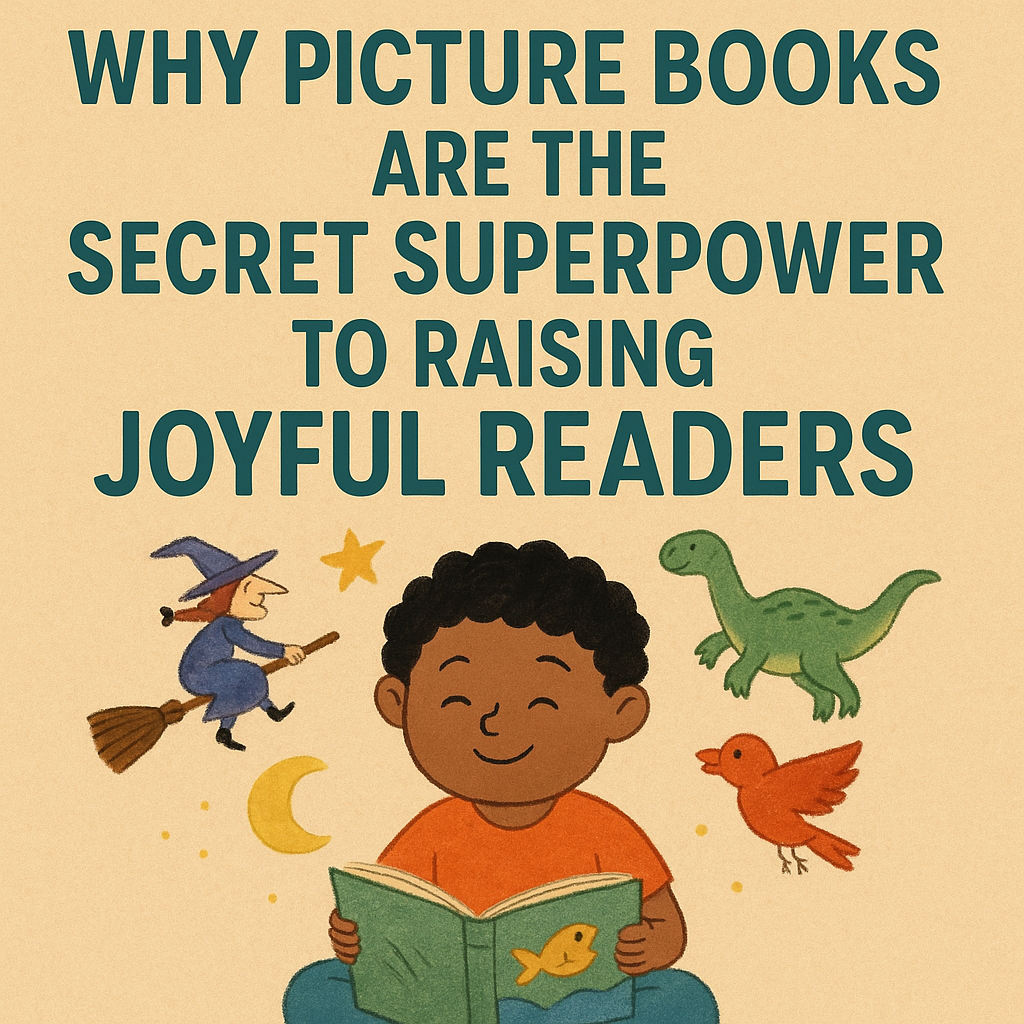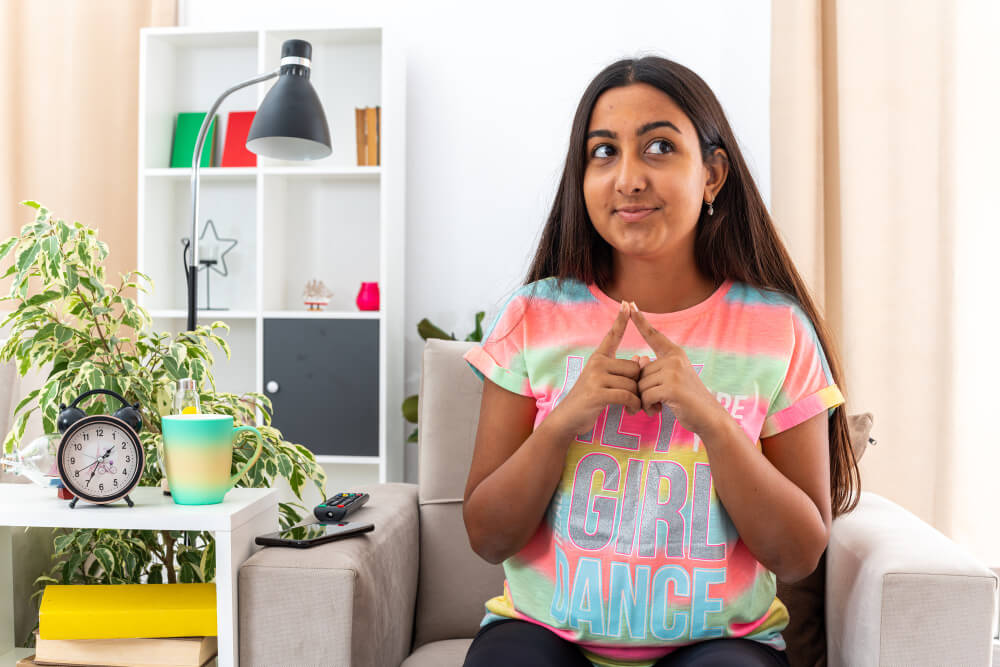Follow Us
- Language Learning
- October 7, 2025
- 8 min min read
Why Picture Books Are the Secret Superpower to Raising Joyful Readers
Step into any good children’s library and you’ll notice something magical: rows of colourful picture books, their covers bursting with imagination. Now, if you’re a parent or an educator in India, chances are you’ve heard someone say, “Oh, picture books are just for very small children. Serious readers need chapter books!”

Well, let me pause right there. As someone who has spent years working with children, teachers, and books, let me tell you: picture books are not just an early step in literacy. They’re a powerful tool that aids literacy, improves vocabulary, and makes reading a pure joy.
Picture books nurture young readers, and we should stop underestimating their magic.
The Myth: Picture Books Are “Too Simple”
Many educators and parents believe that picture books are just “baby books.” After all, they’re short, colourful, and often have more illustrations than text. How can something like The Very Hungry Caterpillar or Where is my Mummy? compete with “serious” reading like Enid Blyton or Harry Potter?
But here’s the truth: picture books are not simple—they’re sophisticated. They layer meaning through words, illustrations, rhythm, and pacing. They engage a child visually, emotionally, and linguistically at the same time.
When a child listens to or reads a picture book, they aren’t just decoding words—they’re interpreting images, predicting storylines, and connecting text with context. That’s higher-order thinking in action.
How Picture Books Aid Literacy
Think of literacy as more than just the ability to sound out words. True literacy is about comprehension, context, and critical thinking. Picture books support all three.
- They build phonemic awareness. Rhyme, rhythm, and repetition in books like Julia Donaldson’s Room on the Broom make children hear language as music. This is the foundation of decoding words later.
- They connect print to meaning. When a child sees a picture of a lion alongside the word lion, the concept becomes concrete. This multimodal reinforcement helps them retain vocabulary far better.
- They encourage prediction and sequencing. A wordless picture book like Jerry Pinkney’s The Lion and the Mouse invites children to “read” the story through illustrations. They learn cause-and-effect, sequence, and storytelling—all critical literacy skills.
- They bridge language gaps. For children in India growing up with multiple languages at home, picture books ease the leap into English by using visuals as anchors.
Vocabulary: Beyond “Cat” and “Dog”
Let’s bust another myth: “Picture books only have simple words.” Actually, the opposite is true!
Because picture books are shorter, authors often choose rich, precise vocabulary. Think of “Me Too”—children encounter words like “hatched” and “caught.” In Indian favourites like Anushka Ravishankar’s Moin and the Monster, children delight in playful, nonsensical vocabulary that sparks curiosity about words.
The images give context. A five-year-old may not know what “slithering” means, but when they see a snake moving across the page, the word clicks instantly. Over time, these words move from passive recognition to active use.
Joy: The Most Important Ingredient
Let’s be honest—if reading feels like homework, children will resist it. Joy is the secret sauce that turns a reluctant reader into a lifelong one.
Picture books are bursting with joy. They’re funny, whimsical, and often written to be read aloud with drama. Parents can ham it up, making story time a bonding ritual. Imagine curling up with your child and reading Gajapati Kulapati by Ashok Rajagopalan—every “aachoo!” is a giggle waiting to happen.
When children associate reading with laughter, comfort, and imagination, they don’t just learn to read—they fall in love with reading. That love is what will carry them into novels, essays, and beyond.
Why Good Quality Picture Books Matter
Of course, not all picture books are created equal. High-quality picture books:
- Respect the child’s intelligence. They don’t dumb down ideas. Books like Oliver Jeffers’ Lost and Found explore themes of friendship and loneliness in profound ways.
- Balance text and illustrations. The words don’t just describe the pictures; they add a second layer of meaning.
- Introduce diverse worlds. From Indian villages to fantastical planets, picture books expose children to experiences beyond their immediate environment.
For example, Tulika Books’ bilingual picture books allow children in India to explore everyday scenarios in English and their mother tongue, reinforcing both languages. The evergreen classics ‘Amar Chitra Katha’ make your child laugh, teach history and Indian culture and inspire patriotism through their innumerable titles.
But Aren’t Chapter Books More Important?
Let’s reframe the question. Chapter books are important, yes—but not more important. They’re simply the next stage. Imagine forcing a child to run before they can walk—it only leads to frustration.
Skipping picture books means skipping:
- Visual literacy (understanding how images communicate).
- Early comprehension skills.
- The joy of rhythm and repetition.
- Confidence from finishing a whole book in one sitting.
All of these are stepping stones to independent reading. In fact, studies show that children who continue reading picture books even after they can decode text tend to develop stronger comprehension and empathy.
A Call to Parents and Educators in India
In many Indian schools, the rush to textbooks and exams pushes picture books aside. Parents worry: “If my child keeps reading these little books, will they ever manage their textbooks?”
My answer: Yes—and they’ll manage it with more joy and less struggle.
Instead of seeing picture books as “babyish,” let’s embrace them as the first step to building confident, curious, lifelong readers. Encourage children to read picture books in multiple languages. Celebrate re-reading (children love it, and it reinforces learning). And most importantly—join them in the fun.
Here are my final thoughts
Picture books are not “just stories with pictures.” They are powerful literacy tools, vocabulary builders, and fountains of joy. They are where children first learn that reading is not a chore but an adventure.
So the next time you pick up a picture book for your child—or your students—don’t dismiss it as too simple. Remember: this is where the love of reading begins.
And at Chippersage, we believe that’s a love every child in India deserves.
Parents, try this today: Pick up a picture book, sit with your child, and read it aloud. Watch their eyes widen, their lips move with yours, their laughter bubble up. That joy? That’s a reader being born.
Latha Srinivasan
English Language Specialist with 15+ years of experience in curriculum development and teacher training.
© 2025 Chippersage. All rights reserved

